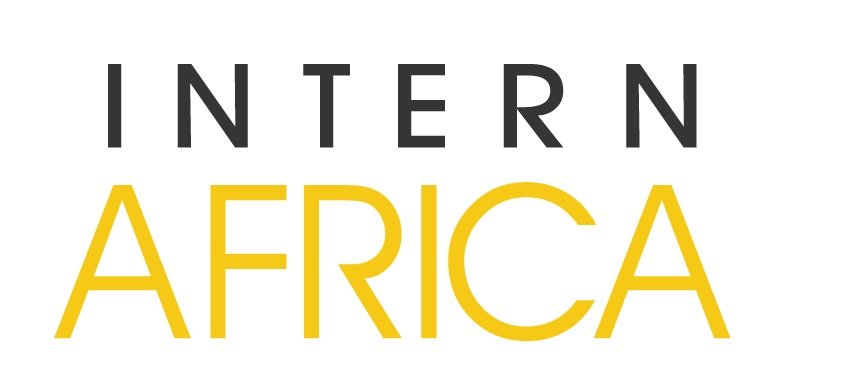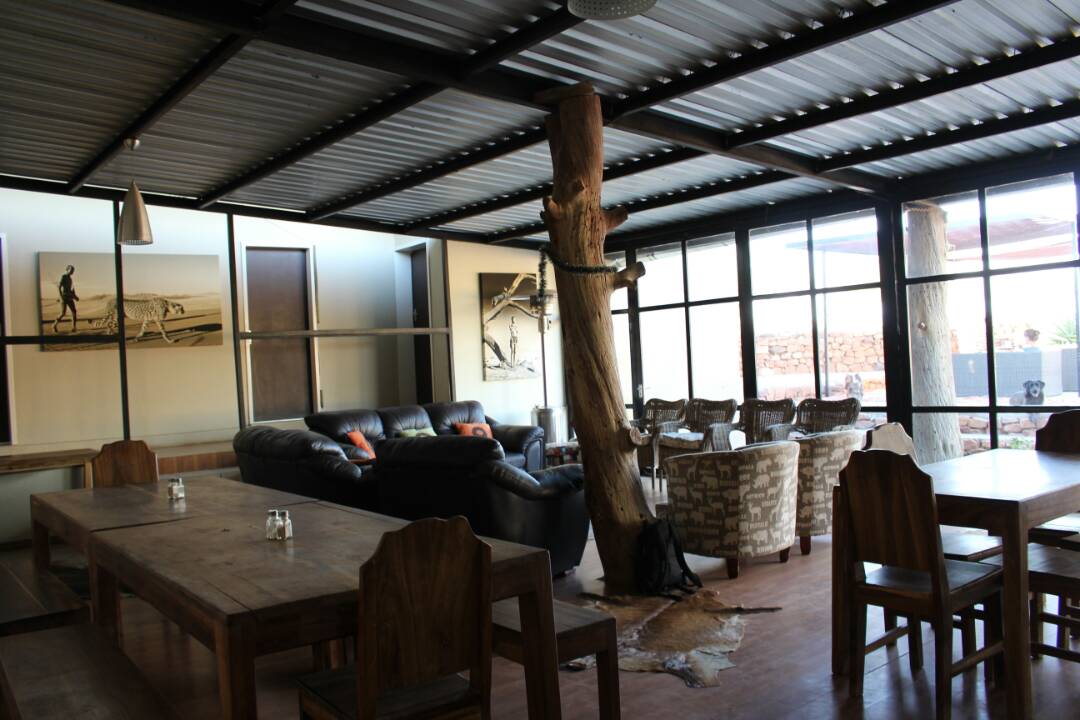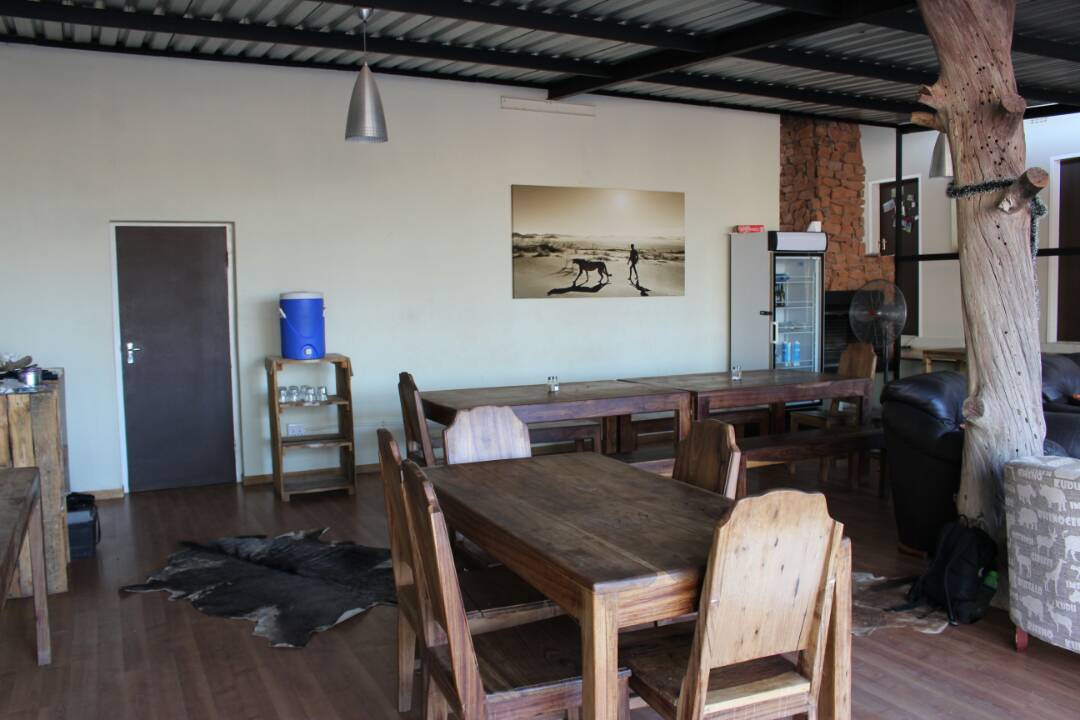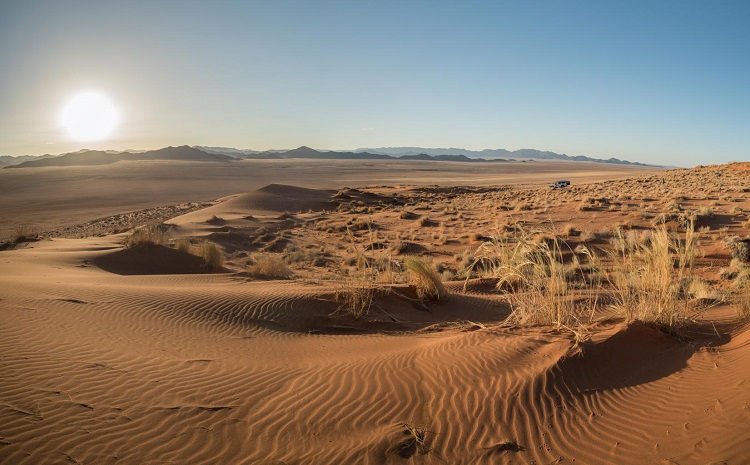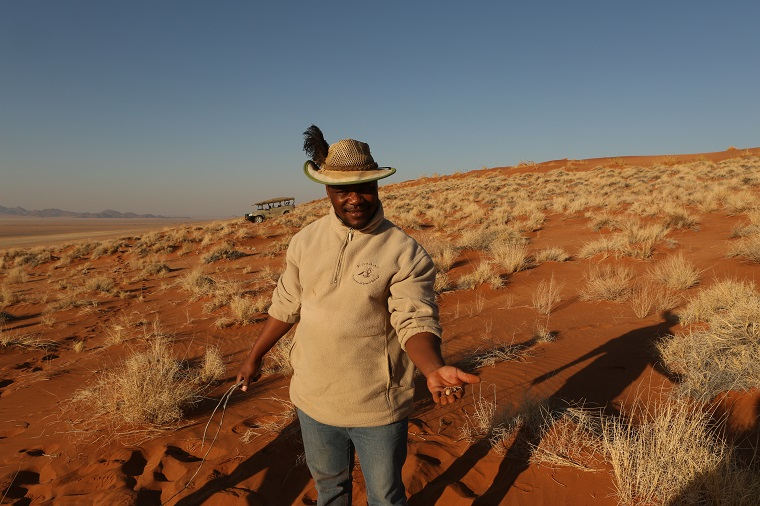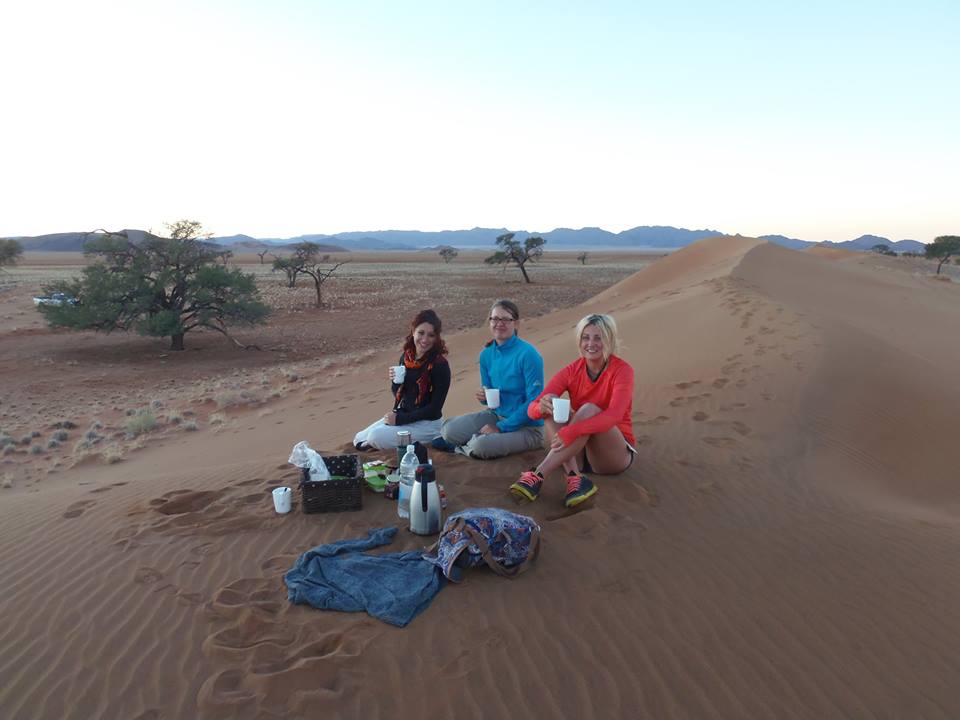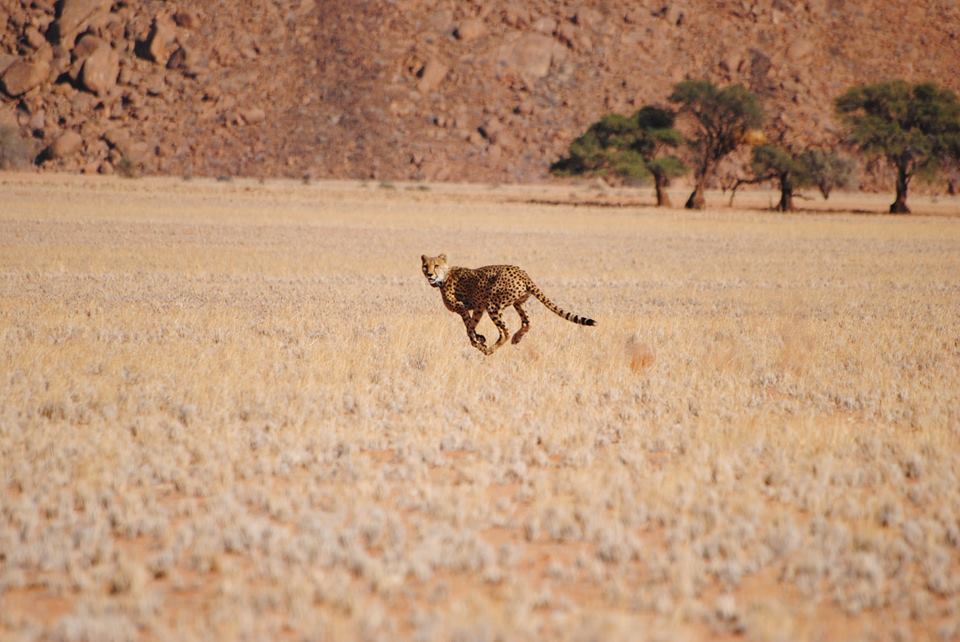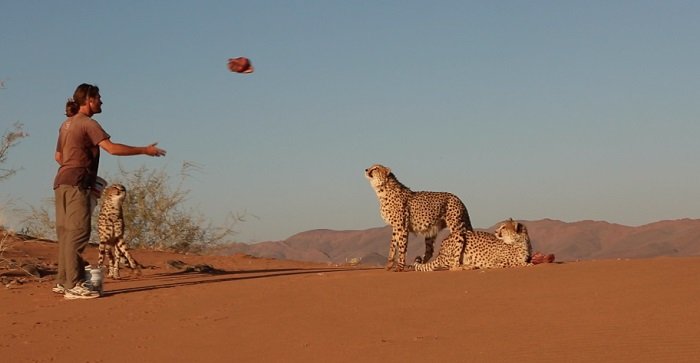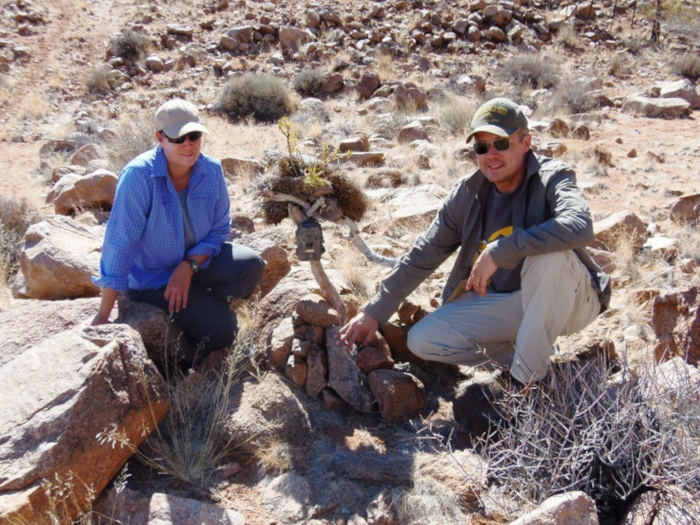NAMIBIA
CARNIVORE & CONSERVATION RESEARCH PROGRAM
CARNIVORE RESEARCH VOLUNTEER
Kanaan is one of the most beautiful and uniquely decorated landscapes found in the desert of Namibia, and is one that that plays home to a multitude and widely varied number of wildlife species. The vast open grasslands, towering mountain ranges, scattered Camel Thorn trees, and not to mention Namibia’s infamous red sand dunes, is what makes this diverse ecology a truly amazing desert oasis. Film-makers, photographers and holiday-makers alike have long recognised this desert gem for what it truly is, a natural masterpiece.
Working in close proximity with the Reserve’s flagship animals: the Cheetah, the Spotted and Brown Hyena, Leopard, as well as a wide range of desert-adapted antelope, volunteers will have the chance to make a real and lasting difference to this wonderful and one-of-a-kind landscape. Time spent at the Kanaan Desert Reserve is time that is never wasted, and volunteers will be involved in a host of on-going research, data collection, tracking, monitoring, security and other essential conservation activities throughout their stay. In addition to these tasks, and others, volunteers will be charged with the care, feeding and food preparation for the two cheetah that live in the 7-hectare enclosure on the red sand dunes of Kanaan. These two carnivores were rescued from the throws of human-wildlife conflicts, and are a landmark for what the Reserve aims to achieve through its conservation and other restoration efforts.
Night drives, anti-poaching patrols, sundowners and horseback riding are all part of your time experienced at Kanaan, and are essential to the continuous conservation efforts of Namibia’s diminishing wildlife.
Working in close proximity with the Reserve’s flagship animals: the Cheetah, the Spotted and Brown Hyena, Leopard, as well as a wide range of desert-adapted antelope, volunteers will have the chance to make a real and lasting difference to this wonderful and one-of-a-kind landscape. Time spent at the Kanaan Desert Reserve is time that is never wasted, and volunteers will be involved in a host of on-going research, data collection, tracking, monitoring, security and other essential conservation activities throughout their stay. In addition to these tasks, and others, volunteers will be charged with the care, feeding and food preparation for the two cheetah that live in the 7-hectare enclosure on the red sand dunes of Kanaan. These two carnivores were rescued from the throws of human-wildlife conflicts, and are a landmark for what the Reserve aims to achieve through its conservation and other restoration efforts.
Night drives, anti-poaching patrols, sundowners and horseback riding are all part of your time experienced at Kanaan, and are essential to the continuous conservation efforts of Namibia’s diminishing wildlife.
- Age: min. 18
- Location: Kanaan, Namibia
- Requirements: good physical fitness, flexible
- Group size: max 16 participants
- Project duration: 1 week - 12 weeks
- Laundry: Included - weekly
- WIFI: No WIFI available, except for emergencies
- Linen/towels:Linen and towels provided. Bring your own bath-towel
Location
The project is located in Kanaan, 7 hour drive from Windhoek
Requirements
Volunteers and students from all across the globe and from any age above 18 years old are welcome. You need to speak English while working on our sites. If English is not your first language, you should be able to speak it reasonably fluently.
Training/qualifications
Hiking and trekking the mountainous terrain make up a large part of the daily activities at Kanaan, and thus a good level of fitness is recommended. However, activities can be tailored to suit the fitness needs and levels of most people. Appropriate footwear is required.
Kanaan
Famous for its ample photographic opportunities, vast open grass plains and Namibia’s iconic red sand dunes, Kanaan N/a’an ku sê Desert Retreat is a world-renowned holiday, film and photography destination that never fails to leave visitors breathless. Dotted throughout with Camel Thorn trees, an abundance of antelope and towering mountain ranges, the successful management of this thriving wildlife area is a task that is both vast in magnitude and complexity, with many different interests and facets at play every day. The scale of operations is one that requires many eyes and hands to get the necessary work done on a daily basis.
For those who want to experience the desert first-hand, in an up close and personal kind of way, Kanaan offers its guests the chance to get actively involved, helping out with the majority of the duties that are required for the sound management of the Reserve. Located on a part of the neighbouring farm Vergenoeg, Kanaan provides its inhabitants with 352km2 of stunning desert scenery, highlighting the already world-famous desert landscape. Add to this the abundance of this country’s spectacular wildlife, and the research, film and photography opportunities are endless. During your visit to this pristine piece of desert paradise you will be helping in the collection and assimilation of wildlife data, in conjunction with the local team of wildlife experts, to help contribute to the long-term running, sustainability and management of the Reserve. The flagship species on this Reserve that you will be dealing with include: the Brown Hyena, the Spotted Hyena, Cheetah, Leopard, as well as a host of other desert-adapted wildlife species and antelope. Being a direct border with the Namib Naukluft Park, Kanaan provides an important link in the landscape scale wildlife conservation efforts of this region.
Activities
You will get the chance to become involved first-hand in the on-going conservation and maintenance efforts through the research and monitoring of free-ranging carnivores, as well as other desert game.
Mapping
Good, accurate mapping is the basis for any professional and well managed wildlife area. Maps are used for a variety of purposes, one of them being the necessary task of evaluating the plant and animal population data, to help guide future decision making processes regarding the Reserve. Volunteers will be joining the already existing research teams, making use of the GPS tracking systems and units to map any important wildlife observations and habitat features, and anything that may be of interest. These include, infrastructure such as roads and fences, watering holes, etc.
Once this data has been collected, the positional information of the maps will be updated, continually adding to the up-to-date reserve maps. These maps are then used for the purposes of managing the Reserve, as well as for scientific publication.
Mapping means that you get to spend some real quality time in this amazing environment while you gather and collect information on a vast variety of resources and features, both natural and man-made. Much of the mapping activities are done on foot to help you to better understand the relevance of the data collected at a landscape scale. Encounters with a variety of wildlife creatures is just about guaranteed.
Capture, Mark, Release
Understanding how the different wildlife species utilise the Reserve, as well as how they interact with each other in this challenging and demanding environment, is best done through the use of indirect monitoring techniques, such as GPS tracking for example. This is especially important for the more elusive species around the Reserve, which include the Cheetah and Spotted Hyena. GPS collars are an excellent and essential way to gather the much needed and necessary information on these rarely seen carnivores.
Volunteers at the Reserve assist the researchers in identifying areas that see regular carnivore activity, areas such as dens, tree markings and riverbeds, while at the same time placing trap cages for Cheetah only. Once a species of interest has been captured in a trap cage, the animal is immobilised on-site and fitted with a GPS or VHS tracking collar. This allows for the animals continuous monitoring and up-to-date data collection.
Following the release of the animal, work continues on the computer, tracking the satellite information from the animals that are under observation, and putting this information into important scientific context. It is worth noting that this activity is solely dependent on the carnivore species present in the environment at the time, as well as the availability of camera’s and other equipment.
Radio Telemetry Tracking
Although the GPS tracking collars follow the day-today movements of the animals, this is only one piece of the conservation effort puzzle. They do not tell us anything about the animals breeding success, prey selection, health status, or any other ecological parameters needed to properly study and understand these creatures. These direct observations are best made on foot, and are necessary to perform and establish a proper evaluation. Teams will go directly into the bush to track collared animals, allowing them to make these direct assessments and observations. Each collar is fitted with an antennae and a receiver, allowing them to be located via way of radio telemetry.
Although days in the field can be long and hot, often with lots of walking involved, the rewards of finding precious wildlife in the desert, while gathering vital information at the same time, is an unrivalled experience. Keep in mind that this kind of activity is dependent on the collared carnivore species on the Reserve at the time.
Game Count
Herbivore populations have always been an integral part of the African ecosystems, and understanding the local ungulate population dynamics and migratory patterns are essential to ensuring a sufficient water supply. At the same time, the populations of ungulate animals need to be assessed against the available vegetation in the area to avoid issues such as overgrazing. A detrimental factor for the entire ecosystem. Volunteers will participate in the Reserve’s regular game counts, conducted either by car or on horseback, and are an integral part of the overall monitoring efforts of the Reserve. Historically, Kanaan has been home to large herds of migratory and desert-adapted Oryx and Springbok, it is however also home to lesser-known species, such as the Greater Kudu, or Klipspringer. Ostrich populations are another aspect of the environment that volunteers will be counting and recording. Important questions that need to be answered during a game count include: How do wildlife utilise this semi-arid landscape on a seasonal basis? and How does this correlate with the predator populations in the area?
Camera Trapping
Camera traps provide the Reserve with the “extra eyes” it needs to provide it with the continuous monitoring of the animal’s behaviour and so on. These motion-triggered cameras are used during the early resource identification stage, as well as for the purposes of continuous monitoring. The cameras record information 24-hours a day, 7 days a week, 365 days of the year, and as such, are able to observe wildlife and their behaviour that is often overlooked by the human eye. The non-selective nature of the cameras helps capture information on a wide range of species, including carnivores, herbivores, birds and other creatures and critters of the desert. This information helps teams to assess the number and variety of species in the area, including where they live and where they are most active, and are ideal for gathering information on the Reserve’s more elusive, or strictly nocturnal, creatures. They also capture information that would otherwise be lost to our knowledge.
Volunteers will help with the setting up of the cameras in the field (close to watering holes, dens, riverbeds, marked trees, etc.), changing the batteries and memory cards, and going through the extensive footage and images recorded, while structuring the data accordingly.
Cheetah Feed
Kanaan Desert Retreat is home to two rescued cheetah from the N/a’an ku sê Sanctuary. The two cheetah are residents to the 7-hectare enclosure on the Red Dunes of the Kanaan. The volunteers will be involved in the preparation of food for, and the feeding of, these two incredible cats, as well as their care taking responsibilities, such as: cleaning of the enclosure on a regular basis. The caring for these two cheetah has become a vital aspect of the program at Kanaan N/a’an ku sê, and is proof of their dedication to providing the best lives possible to former victims of human-wildlife conflicts throughout southern Africa. Viewing and caring for these unique and endangered creatures against the Namibian backdrop is an experience that will resonate with you throughout your lifetime.
Maintenance and Security
When it comes to wildlife, the work does not end on the side of science and research. Measured and intentional steps and actions need to be taken in order to maintain the proper and adequate functioning of the ecosystems within the Reserve, especially in the much dryer areas such as Kanaan. Regular security and anti-poaching patrols are also conducted around the Reserve, as well as other security efforts, to the ensure safety and protection of all the animals. Fence removal is also an integral part of the environmental rehabilitation program. Volunteers should be prepared to get their hands a little dirty from time to time, and should not be afraid to get involved in the maintenance activities as far as their capabilities allow.
Other Activities
Sundowners are a must-do when you out in the desert, as you get to sit back and relax as you enjoy the breath-taking scenery, sunsets and welcome tranquillity. Night drives and sleep outs are also part of the security protocol, and gives volunteers the chance to observe the deserts nocturnal wildlife, as well as bask at the marvel that is the Milky Way. A highlight not to be missed.
Breaking away from the buzz of civilization and breaching the peace and quiet that is Namibia, is a must for everyone with a sense of adventure in their hearts, and ideal for those who are in need of a new perspective on life.
Accommodation & meals
You will be staying in the beautifully renovated Kanaan farm house with shared rooms and bathroom. The farm house has 2 rooms which can accommodate 7 volunteers, with three campsites with tented accommodation to accommodate groups bigger than 7. The guesthouse has electricity, but volunteers need to bring their own South African socket adapters to charge electric appliances. However, there’s limited cell phone reception in the area and no internet. Groups of up to 12 participants can be accommodated at any one time.
Electricity is especially limited at Kanaan. Due to the rural nature of the Kanaan site, power is restricted to minimal usage. Kanaan is largely solar powered to make the lodge as eco friendly as possible
Meals
Volunteers on Kanaan will receive 3 balanced meals per day. Meals include a standard breakfast with cereals and toast. Coffee and tea are available. Lunches will be provided at the guest farm or in packed form for groups active in the field. Dinners typically are warm meals with meat (chicken, red meat or fish), different vegetables and pasta, rice, potato or salad. Once per week, dinner will be in the form of a traditional Namibian braai (barbeque). Please note that due to the remote location of Kanaan, some fresh produce may only be available seasonally. Vegetarian options can be catered for upon request. Please inform us of any special dietary requirements prior to your arrival at the project site.
Kiosk
There is a small farm shop with beverages, alcoholic drinks and snacks at Kanaan which you can purchase while there, the shop only opens every second day around lunch time. There is communal fridge where you can put in your drinks to keep it nice and cold.
The project is located in Kanaan, 7 hour drive from Windhoek
Requirements
Volunteers and students from all across the globe and from any age above 18 years old are welcome. You need to speak English while working on our sites. If English is not your first language, you should be able to speak it reasonably fluently.
Training/qualifications
Hiking and trekking the mountainous terrain make up a large part of the daily activities at Kanaan, and thus a good level of fitness is recommended. However, activities can be tailored to suit the fitness needs and levels of most people. Appropriate footwear is required.
Kanaan
Famous for its ample photographic opportunities, vast open grass plains and Namibia’s iconic red sand dunes, Kanaan N/a’an ku sê Desert Retreat is a world-renowned holiday, film and photography destination that never fails to leave visitors breathless. Dotted throughout with Camel Thorn trees, an abundance of antelope and towering mountain ranges, the successful management of this thriving wildlife area is a task that is both vast in magnitude and complexity, with many different interests and facets at play every day. The scale of operations is one that requires many eyes and hands to get the necessary work done on a daily basis.
For those who want to experience the desert first-hand, in an up close and personal kind of way, Kanaan offers its guests the chance to get actively involved, helping out with the majority of the duties that are required for the sound management of the Reserve. Located on a part of the neighbouring farm Vergenoeg, Kanaan provides its inhabitants with 352km2 of stunning desert scenery, highlighting the already world-famous desert landscape. Add to this the abundance of this country’s spectacular wildlife, and the research, film and photography opportunities are endless. During your visit to this pristine piece of desert paradise you will be helping in the collection and assimilation of wildlife data, in conjunction with the local team of wildlife experts, to help contribute to the long-term running, sustainability and management of the Reserve. The flagship species on this Reserve that you will be dealing with include: the Brown Hyena, the Spotted Hyena, Cheetah, Leopard, as well as a host of other desert-adapted wildlife species and antelope. Being a direct border with the Namib Naukluft Park, Kanaan provides an important link in the landscape scale wildlife conservation efforts of this region.
Activities
You will get the chance to become involved first-hand in the on-going conservation and maintenance efforts through the research and monitoring of free-ranging carnivores, as well as other desert game.
Mapping
Good, accurate mapping is the basis for any professional and well managed wildlife area. Maps are used for a variety of purposes, one of them being the necessary task of evaluating the plant and animal population data, to help guide future decision making processes regarding the Reserve. Volunteers will be joining the already existing research teams, making use of the GPS tracking systems and units to map any important wildlife observations and habitat features, and anything that may be of interest. These include, infrastructure such as roads and fences, watering holes, etc.
Once this data has been collected, the positional information of the maps will be updated, continually adding to the up-to-date reserve maps. These maps are then used for the purposes of managing the Reserve, as well as for scientific publication.
Mapping means that you get to spend some real quality time in this amazing environment while you gather and collect information on a vast variety of resources and features, both natural and man-made. Much of the mapping activities are done on foot to help you to better understand the relevance of the data collected at a landscape scale. Encounters with a variety of wildlife creatures is just about guaranteed.
Capture, Mark, Release
Understanding how the different wildlife species utilise the Reserve, as well as how they interact with each other in this challenging and demanding environment, is best done through the use of indirect monitoring techniques, such as GPS tracking for example. This is especially important for the more elusive species around the Reserve, which include the Cheetah and Spotted Hyena. GPS collars are an excellent and essential way to gather the much needed and necessary information on these rarely seen carnivores.
Volunteers at the Reserve assist the researchers in identifying areas that see regular carnivore activity, areas such as dens, tree markings and riverbeds, while at the same time placing trap cages for Cheetah only. Once a species of interest has been captured in a trap cage, the animal is immobilised on-site and fitted with a GPS or VHS tracking collar. This allows for the animals continuous monitoring and up-to-date data collection.
Following the release of the animal, work continues on the computer, tracking the satellite information from the animals that are under observation, and putting this information into important scientific context. It is worth noting that this activity is solely dependent on the carnivore species present in the environment at the time, as well as the availability of camera’s and other equipment.
Radio Telemetry Tracking
Although the GPS tracking collars follow the day-today movements of the animals, this is only one piece of the conservation effort puzzle. They do not tell us anything about the animals breeding success, prey selection, health status, or any other ecological parameters needed to properly study and understand these creatures. These direct observations are best made on foot, and are necessary to perform and establish a proper evaluation. Teams will go directly into the bush to track collared animals, allowing them to make these direct assessments and observations. Each collar is fitted with an antennae and a receiver, allowing them to be located via way of radio telemetry.
Although days in the field can be long and hot, often with lots of walking involved, the rewards of finding precious wildlife in the desert, while gathering vital information at the same time, is an unrivalled experience. Keep in mind that this kind of activity is dependent on the collared carnivore species on the Reserve at the time.
Game Count
Herbivore populations have always been an integral part of the African ecosystems, and understanding the local ungulate population dynamics and migratory patterns are essential to ensuring a sufficient water supply. At the same time, the populations of ungulate animals need to be assessed against the available vegetation in the area to avoid issues such as overgrazing. A detrimental factor for the entire ecosystem. Volunteers will participate in the Reserve’s regular game counts, conducted either by car or on horseback, and are an integral part of the overall monitoring efforts of the Reserve. Historically, Kanaan has been home to large herds of migratory and desert-adapted Oryx and Springbok, it is however also home to lesser-known species, such as the Greater Kudu, or Klipspringer. Ostrich populations are another aspect of the environment that volunteers will be counting and recording. Important questions that need to be answered during a game count include: How do wildlife utilise this semi-arid landscape on a seasonal basis? and How does this correlate with the predator populations in the area?
Camera Trapping
Camera traps provide the Reserve with the “extra eyes” it needs to provide it with the continuous monitoring of the animal’s behaviour and so on. These motion-triggered cameras are used during the early resource identification stage, as well as for the purposes of continuous monitoring. The cameras record information 24-hours a day, 7 days a week, 365 days of the year, and as such, are able to observe wildlife and their behaviour that is often overlooked by the human eye. The non-selective nature of the cameras helps capture information on a wide range of species, including carnivores, herbivores, birds and other creatures and critters of the desert. This information helps teams to assess the number and variety of species in the area, including where they live and where they are most active, and are ideal for gathering information on the Reserve’s more elusive, or strictly nocturnal, creatures. They also capture information that would otherwise be lost to our knowledge.
Volunteers will help with the setting up of the cameras in the field (close to watering holes, dens, riverbeds, marked trees, etc.), changing the batteries and memory cards, and going through the extensive footage and images recorded, while structuring the data accordingly.
Cheetah Feed
Kanaan Desert Retreat is home to two rescued cheetah from the N/a’an ku sê Sanctuary. The two cheetah are residents to the 7-hectare enclosure on the Red Dunes of the Kanaan. The volunteers will be involved in the preparation of food for, and the feeding of, these two incredible cats, as well as their care taking responsibilities, such as: cleaning of the enclosure on a regular basis. The caring for these two cheetah has become a vital aspect of the program at Kanaan N/a’an ku sê, and is proof of their dedication to providing the best lives possible to former victims of human-wildlife conflicts throughout southern Africa. Viewing and caring for these unique and endangered creatures against the Namibian backdrop is an experience that will resonate with you throughout your lifetime.
Maintenance and Security
When it comes to wildlife, the work does not end on the side of science and research. Measured and intentional steps and actions need to be taken in order to maintain the proper and adequate functioning of the ecosystems within the Reserve, especially in the much dryer areas such as Kanaan. Regular security and anti-poaching patrols are also conducted around the Reserve, as well as other security efforts, to the ensure safety and protection of all the animals. Fence removal is also an integral part of the environmental rehabilitation program. Volunteers should be prepared to get their hands a little dirty from time to time, and should not be afraid to get involved in the maintenance activities as far as their capabilities allow.
Other Activities
Sundowners are a must-do when you out in the desert, as you get to sit back and relax as you enjoy the breath-taking scenery, sunsets and welcome tranquillity. Night drives and sleep outs are also part of the security protocol, and gives volunteers the chance to observe the deserts nocturnal wildlife, as well as bask at the marvel that is the Milky Way. A highlight not to be missed.
Breaking away from the buzz of civilization and breaching the peace and quiet that is Namibia, is a must for everyone with a sense of adventure in their hearts, and ideal for those who are in need of a new perspective on life.
Accommodation & meals
You will be staying in the beautifully renovated Kanaan farm house with shared rooms and bathroom. The farm house has 2 rooms which can accommodate 7 volunteers, with three campsites with tented accommodation to accommodate groups bigger than 7. The guesthouse has electricity, but volunteers need to bring their own South African socket adapters to charge electric appliances. However, there’s limited cell phone reception in the area and no internet. Groups of up to 12 participants can be accommodated at any one time.
Electricity is especially limited at Kanaan. Due to the rural nature of the Kanaan site, power is restricted to minimal usage. Kanaan is largely solar powered to make the lodge as eco friendly as possible
Meals
Volunteers on Kanaan will receive 3 balanced meals per day. Meals include a standard breakfast with cereals and toast. Coffee and tea are available. Lunches will be provided at the guest farm or in packed form for groups active in the field. Dinners typically are warm meals with meat (chicken, red meat or fish), different vegetables and pasta, rice, potato or salad. Once per week, dinner will be in the form of a traditional Namibian braai (barbeque). Please note that due to the remote location of Kanaan, some fresh produce may only be available seasonally. Vegetarian options can be catered for upon request. Please inform us of any special dietary requirements prior to your arrival at the project site.
Kiosk
There is a small farm shop with beverages, alcoholic drinks and snacks at Kanaan which you can purchase while there, the shop only opens every second day around lunch time. There is communal fridge where you can put in your drinks to keep it nice and cold.
Dates
All volunteers will be collected from Windhoek airport and dropped of at the wildlife sanctuary. From here, the transfer to the research facility will take place. Transfers to, from and between Kanaan occur on Saturdays. The drive to Kanaan is 6-7 hours (South of Namibia) You will need to arrive on Thursday's and depart on Sunday's or Monday's (additional fee of 500 NDS)
Rates
Rates includes
All volunteers will be collected from Windhoek airport and dropped of at the wildlife sanctuary. From here, the transfer to the research facility will take place. Transfers to, from and between Kanaan occur on Saturdays. The drive to Kanaan is 6-7 hours (South of Namibia) You will need to arrive on Thursday's and depart on Sunday's or Monday's (additional fee of 500 NDS)
Rates
| Duration | Fees |
|---|---|
| 2 weeks & 2 days | 23600 NDS |
| 3 weeks & 2 days | 33200 NDS |
| 4 weeks & 2 days | 41500 NDS |
- Project placement
- Airport transfers on arrival and departure
- Accommodation (twin or triple room/tent, full-board, laundry service)
- An orientation on arrival
- Electronic certificate (printed copy on request)
- Local support including 24-hour emergency number
- Research site supplement includes: transfers and additional operational costs
- Flights to Windhoek, Namibia
- Visa fees
- Travel Insurance
- Beverages & Snacks
- WIFI
Click here to sign up.
